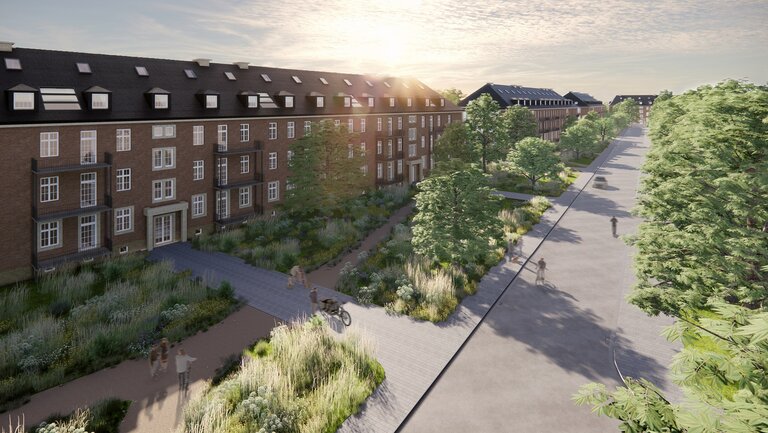Formerly British military barracks, soon a new district in Krefeld: the Anglicus district on the site of the formerBradbury barracks, where 725 new apartments will be built. Derelict for years, the site is nearly 17 soccer fields in size and includes many landmarked buildings.
The Cologne-based project developer Rauchfuss et Socii GmbH intends to renovate this historic stock of buildings with ecological aspects in mind, add new buildings, and develop the site into a green district by 2028. Certification to the standard of the German Sustainable Building Council (DGNB) is to serve as a seal of quality for sustainability. Drees & Sommer will support the project developer towards DGNB certification.
Brick buildings covered in dust, overgrown sidewalks and metal fences will soon be a thing of the past on Krefeld's Kempener Allee ‘We will start construction work before year-end. Our goal is to transform the Anglicus district into a vibrant and sustainable urban neighborhood by 2028, where around 2,200 people will live and work. Sustainable urban district certification provides us with excellent guidelines for checking and optimizing our project with regard to specific sustainability criteria.,’ explains Stefan Rauchfuss, founder and CEO of Rauchfuss et Socii GmbH.
Urban Certificates Are in Strong Demand
Sustainability quality seals have long been in demand for more than just individual buildings. Tanja Sprenger, DGNB author and expert for sustainable neighborhood development at Drees & Sommer comments: ‘For years now, we have been seeing increasing demand for this type of certificate, including in the urban district sector. This is mainly because sustainability seals of quality increase the attractiveness and value of a neighborhood, while also making properties more attractive to potential tenants. Regulations such as the EU taxonomy for sustainable investments and climate protection targets at German federal level also increasingly require project developers and investors to ensure that their neighborhood projects are 'proven to be sustainable'. The good thing is that in the end, everyone benefits: the building owner or developer, the local authority, and the future users.‘ This is because urban district certification includes not only ecological and economic aspects, but also socio-cultural criteria. Key questions include: What will local amenities and public transport links in the quarter look like at a later stage? Are there enough green spaces and open areas? Is land being used efficiently and is biodiversity being facilitated? What is the accessibility situation?
Find further information in our press release.
